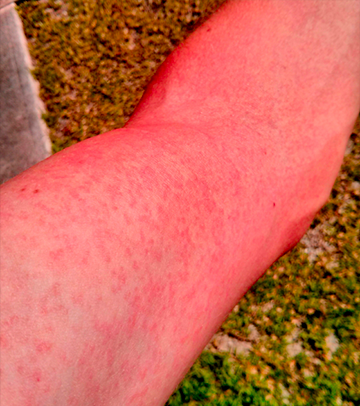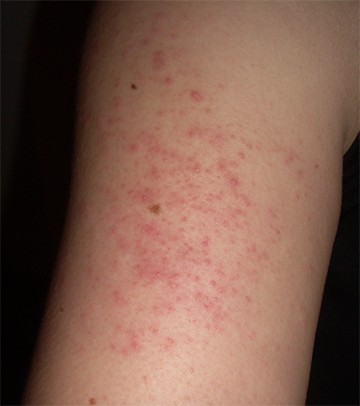.....and 4 other pictures that tell you everything you need to know about the Zika Virus
Over the past month, you’ve probably come to associate the following words with the Zika Virus: mosquitos, birth defects, Brazil. And earlier this week, you probably heard that cases have shown that that the virus could be sexually transmitted. If you haven’t been following this story closely - the next 5 pictures tell you everything you need to know:
THE RASH


One of these rashes is caused by the Zika Virus. The other is simply Keratosis pilaris, a skin condition 30-50% of adults have which is purely cosmetic. Can you tell which is which? Neither can we, which is why you should always snap and share a photo of your rash with your doctor with CaptureProof. It’s free so what are you waiting for? Sign up today and we’ll tell you which is which!
The reality is, the U.S. Centers for Disease Control and Prevention cites studies that say that up to 80% who get Zika virus don’t get any symptoms and thus don't know they have it. And for everyone else, the symptoms are usually fairly mild — a rash, headaches, joint and/or bone pain, and a fever. These symptoms usually show up between 3-12 days after the first mosquito bite, and then go away within a week. Landing in the hospital is uncommon, and death is rare.
HOW DOES IT SPREAD?

Creative Commons
The Zika virus, a tropical disease known to be carried from person to person by mosquitoes. Most specifically it’s linked to the Aedes aegypti mosquito. A mosquito can bite an infected person, and spread it to another person.
MICROCEPHALY

Between October 2015 and January 2016 there have been over 4000 babies in Brazil who have been born with microcephaly - a condition which can cause lifelong intellectual disability, developmental delays and even death in newborns. This is a huge uptick when you consider in the previous 4 years, there were only 156 cases of microcephaly yearly. The believed cause: pregnant mothers who reported having symptoms of Zika early in their pregnancies.
IS THERE A VACCINE?

Developing a vaccine is an international priority- but as you can imagine, creating vaccine to protect pregnant women is complicated. Researchers and the international community have shown consensus for not exposing these expectant mothers to experimental remedies, for as long as possible, to avoid risking harm to their fetuses. “Testing a vaccine on pregnant women is a “practical and ethical nightmare”, says Mike Turner, head of infection and immunobiology at the Wellcome Trust.
IS IT IN THE US?

There have been more than 30 Americans diagnosed with Zika, after they came back from travel abroad to countries with Zika outbreaks. It’s understood there is a low risk of spreading for these cases. There is a case of a Texas resident who contracted the virus from a sexual partner; however, this is only the 2nd documented case every of Zika being sexually transmitted to date. For now health officials have not listed the continental US on their list of outbreak countries because the virus has not yet affected local mosquito populations. However, there is fear as the US heats up in the spring and summer, the South could especially be at risk because of the humid weather, and impoverished areas where people live without proper screens on their window and air conditioning. Some models estimate that as many as 200M people live in US areas that might be conducive to the spread of Zika.
